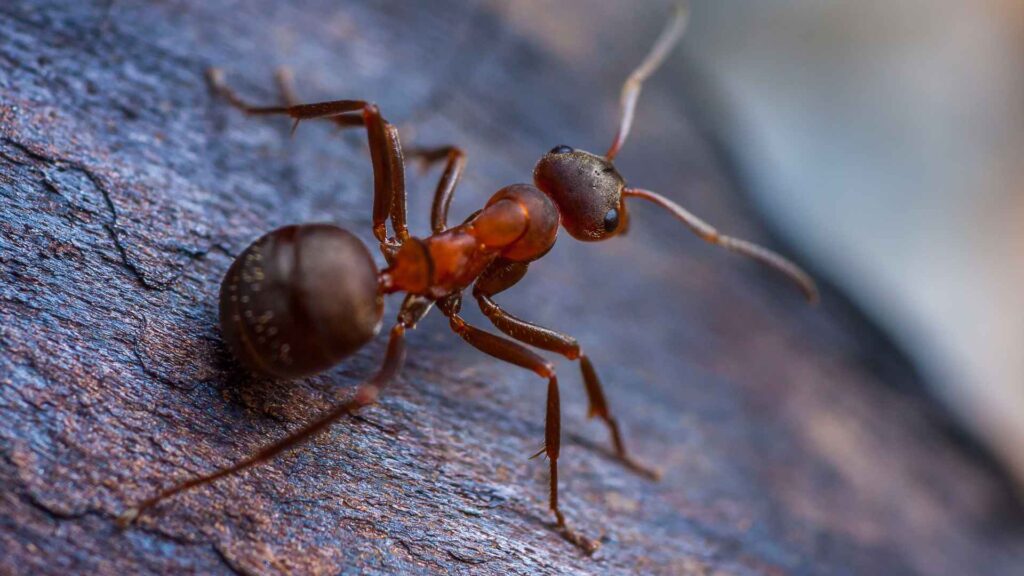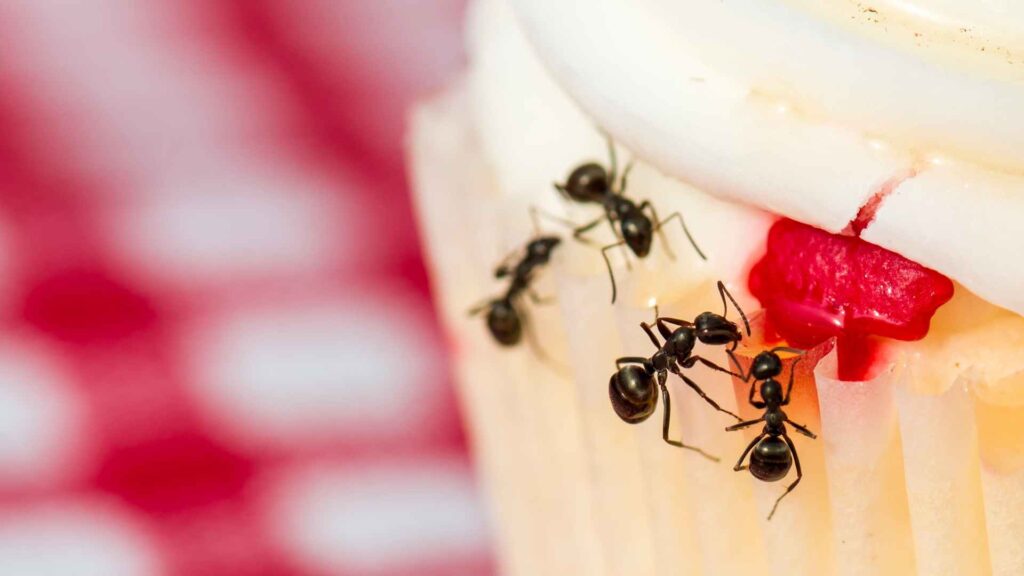Table Of Content
ToggleAs a pest control expert, I’ve seen countless homeowners frustrated by tiny ants trailing across their kitchen floor, seemingly drawn to a mysterious moisture source. Learn how to get rid of moisture ants can be tricky.
Moisture ants, also known as carpenter ants or pharaoh ants (depending on the species), thrive in damp environments. They’re attracted to leaking pipes, condensation buildup, and areas with poor ventilation.
Here’s a comprehensive guide on how deal with this problem, reclaim your home, and prevent future infestations.
Before diving into elimination methods, take these initial steps:

Here are some natural and readily available methods to combat moisture ants, along with application tips:
The acidity of vinegar repels ants and disrupts their pheromone trails, making it difficult for them to communicate and find food sources.
How to Apply:
Caution: While vinegar is a natural solution, it can damage certain surfaces. Always test on a small area before applying liberally.
Borax disrupts the digestive system of ants, ultimately killing them. By creating a bait that attracts ants, you can target the entire colony, not just the worker ants you see foraging.
How to Apply:
Remember: While effective, borax bait is a slow-acting method. Be patient and consistent with application for best results.
Diatomaceous earth is a natural powder made from fossilized algae that dehydrates ants by puncturing their exoskeletons. It’s a non-toxic option for those with concerns about using chemicals.
How to Apply:
Keep in mind: While DE is effective at killing individual ants, it may not eliminate the entire colony.
Peppermint, tea tree, and citrus oils (like lemon or orange) all have strong scents that repel ants.
How to Apply:
Note: Essential oils can be potent. Avoid direct contact with skin and eyes. Reapplication may be necessary as the scent dissipates.
Dish soap disrupts the waxy outer layer of ants, causing dehydration and ultimately killing them. It’s a simple and readily available solution for spot treatment.
How to Apply:
Repeat as needed to target any new ant activity you see.
The smell of coffee grounds is a natural deterrent for ants.
How to Apply:
Reapply coffee grounds every few days or after heavy rain to maintain the repellent effect.
Cinnamon acts as a natural repellent due to its strong aroma.
How to Apply:
Reapply cinnamon as needed, especially after vacuuming or cleaning treated areas.
Important Note: While these DIY methods can be effective for mild infestations, they may not always eliminate the entire colony, especially for well-established ant problems.
Eliminate Ants Effortlessly: Contact Our Pest Control Services!

If DIY methods aren’t working, consider these chemical solutions:
Chemicals can be harmful if not used correctly. Always wear gloves, eye protection, and follow the manufacturer’s instructions. Keep children and pets away from treated areas until it’s safe.

If the infestation is severe, or DIY methods prove ineffective, consider professional pest control. Professionals have access to stronger insecticides and can identify hidden nests.
A professional will:
Professional pest control offers long-term benefits:
Turn Your Home Ant-Free: Expert Help is Just a Phone Call Away!
Once you’ve eliminated the moisture ant problem, focus on prevention to stop them from returning. Here are some key strategies:

As a pest control expert, I’ve seen the effectiveness of a combined approach. By following these strategies, you can effectively eliminate moisture ants and keep your home pest-free.
Remember, vigilance and proactive measures are key to preventing future infestations. If you have any questions or suspect a serious ant problem, don’t hesitate to contact us to help you.
To get rid of moisture ants, you can employ a combination of natural remedies and chemical treatments. Start by eliminating moisture sources and sealing entry points in your home. Natural methods such as vinegar solutions, diatomaceous earth, and borax baits can be effective. For persistent problems, chemical baits and sprays specifically designed for ants may be necessary.
The best bait for moisture ants typically includes a sweet substance mixed with a slow-acting poison such as borax. Ants are attracted to the sweet base, allowing them to carry the borax back to their colony, which eventually kills them. Commercial ant baits specifically labeled for moisture ants or sugar-feeding ants can also be very effective.
Moisture ants are not directly harmful to humans as they do not bite or sting, but they can cause damage to structures by excavating wood and other materials to build their nests. This activity can compromise the integrity of infested wood, leading to structural damage over time.
A moisture ant is typically small, about 1/8 to 1/4 inch long, and can range in color from yellowish to dark brown. These ants have a smooth, shiny appearance and are most often seen in areas with high moisture levels, such as kitchens and bathrooms, or near leaks and damp wood.
References
https://www.mashupmom.com/yes-borax-got-rid-of-the-ants /
https://tidyapartment.com/are-ants-attracted-to-cinnamon /
Your trusted pest control experts in Southern California. Keeping your neighborhood pest-free!